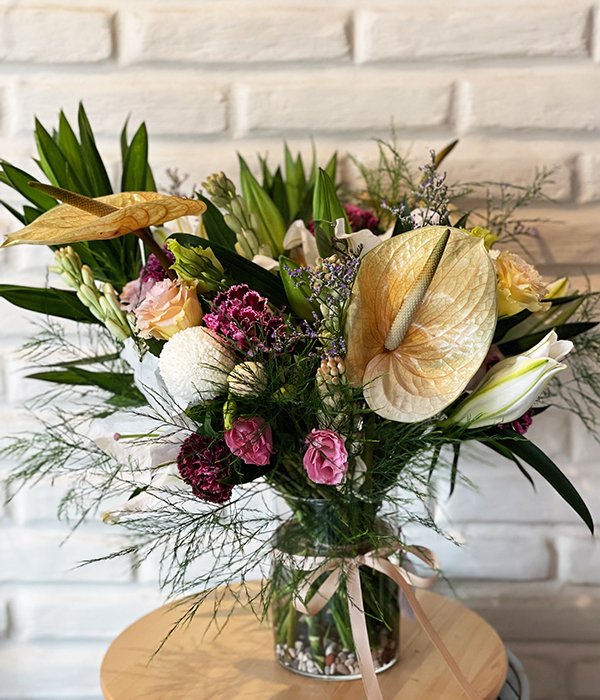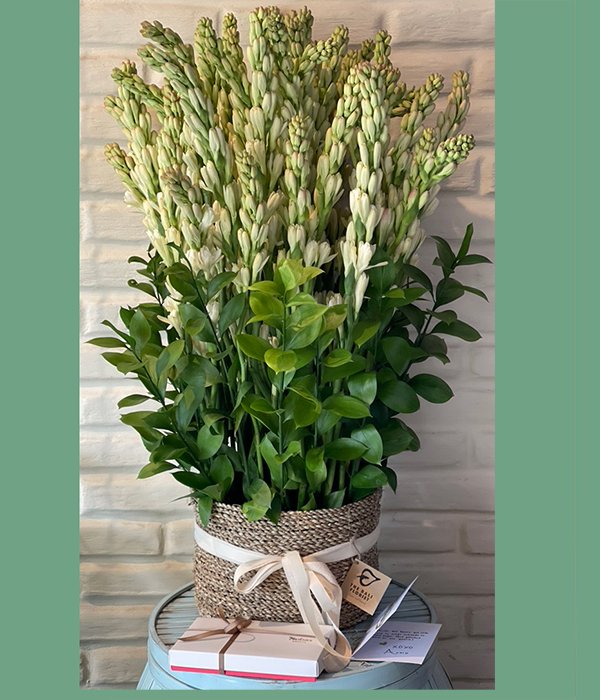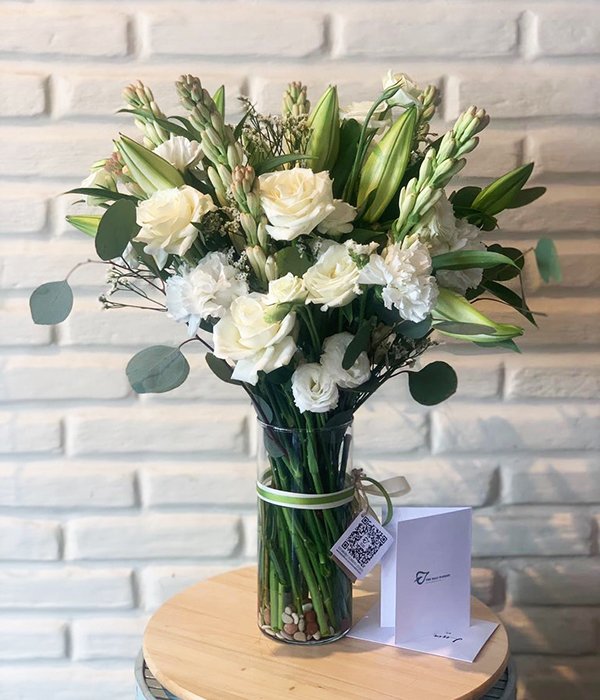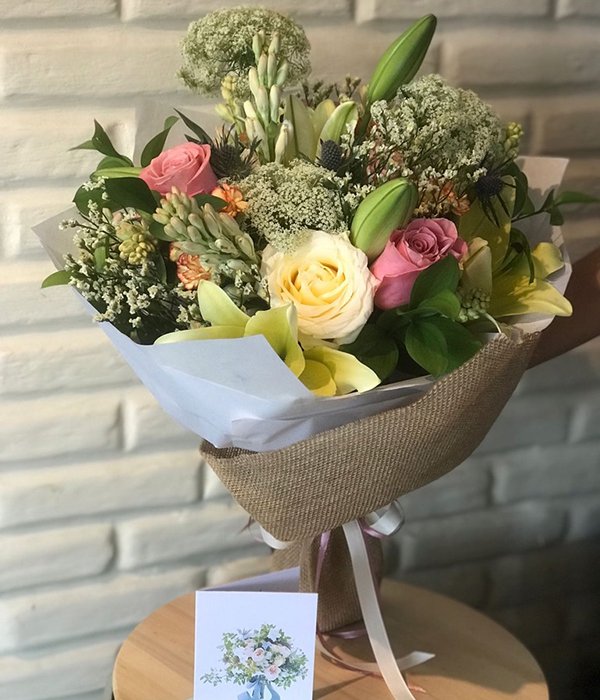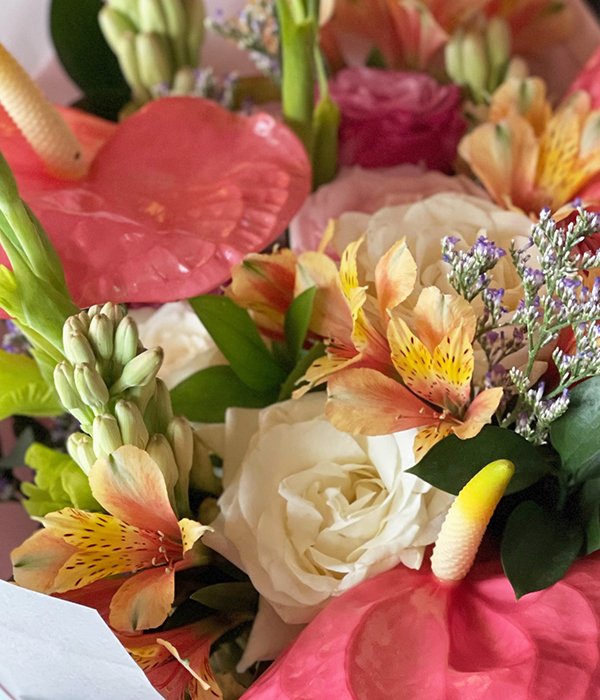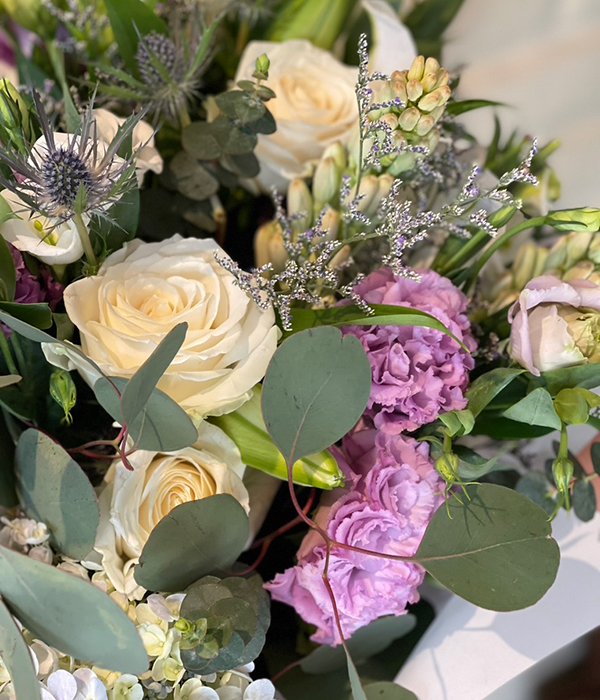From Fields to Florist: A Tuberose Journey from Tabanan
Have you ever wandered through the small alleys in Bali enchanted by the lingering scent of fragrant flowers? Perhaps you’ve encountered the captivating aroma in hotel lobbies or as floral centerpieces adorning homes? These white-greenish, delicate and elongated blooms, known as Tuberoses, hold a special place in the heart of Bali’s floral landscape.
With a penchant for relaxation and a keen eye for aesthetics, I’ve always been drawn to the soothing fragrance of tuberoses. In my Balinese home, these exquisite flowers, known locally as ‘Sedap Malam’ (which literally means Evening Fragrant Smell in Bahasa Indonesia) cherished for their ability to create an atmosphere of serenity and calmness as the sun sets.
Often used as floral centerpieces or standing decorations, tuberoses add a touch of elegance and tranquility to our living spaces, transforming them into sanctuaries of peace and comfort. Sometimes, I adorn my living room with vases of tuberoses as their ethereal beauty adds a touch of elegance to the ambiance. Their delicate blooms serve as a gentle reminder of the beauty and serenity that surrounds us in everyday life.
Picture: Stalks of sedap malam are a favourite of clients of The Bali Florist
Characterised by their herbaceous nature, tuberoses originate from underground tubers or tuberous roots, which possess the remarkable ability to produce offsets – small bulb-like structures that can grow into independent plants, contributing to their resilience and adaptability in cultivation. Its leaves, typically a muted green hue, measure approximately 30–50 cm (1-1.5 ft) in length and up to 13 mm (0.5 in) in width at the base.
Historically, the tuberose is believed to have originated in central and southern Mexico. However, they are now seldom found in the wild and currently grown in many tropical and temperate countries. Though most tuberoses have come from farms in the neighbouring island of Java and travelled by land and sea to florists in Bali, tuberoses have recently found an unlikely home amidst the lush greenery of Tabanan, western part of Bali. Nestled within this picturesque region, Tabanan boasts a unique microclimate and soil composition that closely mirrors the natural habitat of tuberoses, making it an ideal location for their cultivation. It is in this scenic locale that The Bali Florist has forged a partnership with local farmers to source these exquisite blooms.
Our commitment to sustainability goes beyond floral arrangements; it involves supporting local communities and preserving traditional agriculture. So, when Wahyu, whose parents grow tuberoses in Tabanan, approached us about their production, we eagerly partnered with them. Their dedication to cultivating tuberoses aligned with our values, and through this partnership, we aim to bring their beauty to our customers while uplifting local communities and traditions.
The Story of TBF's Exclusive Partnership
In our quest for the finest tuberoses, we discovered a hidden gem in the form of Bapak I Mande Jendra and Ibu Wayan Sri Rupa Asih, a dedicated husband-and-wife duo residing in the quaint village of Tajen, northern part of Tabanan Regency. With a passion for farming and a desire to utilise their 35-acre land effectively, they embarked on a journey to cultivate good quality tuberoses. They epitomise the spirit of sustainable agriculture, utilising their plot of land to cultivate tuberoses alongside traditional crops.
Their daughter, Wahyu, played a pivotal role in initiating partnerships with florists around Bali. Initially a customer at Café Bloom, a coffee shop and tea house attached to The Bali Florist, she introduced us samples of tuberoses and offered to supply them weekly. We receive regular deliveries of 50-100 stems per drop (twice weekly). Their production consist of 800 – 1,200 stems per harvest. Harvested thrice weekly, tuberoses are meticulously sorted into different grades to meet florists’ diverse needs.
Tuberoses are carefully sorted and grouped for delivery to florists around in Bali
Tabanan's climate, characterised by mild temperatures and regular rainfall, closely resembles the native habitat of tuberoses in Mexico. Additionally, the fertile soil rich in nutrients provides an optimal growing environment for these delicate blooms. It is this harmonious blend of environmental factors that enables tuberoses to thrive in Tabanan. Despite that, cultivating tuberoses in Tabanan presents its own set of challenges which Mr. & Mrs. Jendra were able to overcome through meticulous observation, resilience and hardwork.
The key to successful cultivation lies in ensuring an adequate water supply and managing the impact of rain. Additionally, tuberoses are susceptible to pests and diseases, particularly in prolonged rainy conditions, but the farmers have developed effective strategies to mitigate these challenges. Through their observation harvest after harvest, they discovered that continuous exposure to water helps naturally combat fungal infections, while sunlight also aids in their prevention. Despite occasional setbacks such as viral infections leading to wilting, the plant exhibits remarkable resilience, with new shoots continuously regenerating. With proper and meticulous care and monitoring, tuberose plants can bloom continuously for up to three years before they are pulled and new seedlings are replanted.
The Bali Florist is truly grateful for this partnership, as it represents an additional effort for us to become more sustainable through local sourcing and indirect community empowerment. Thanks to the Jendra's dedication and expertise, tuberoses have found a new home in the heart of Tabanan, contributing to the region's agricultural diversity and economic prosperity. As we look ahead, we hope that their success with the cultivation and distribution of tuberoses locally within Bali will inspire similar ventures with other types of flowers on the island. Perhaps in the future, sunflowers, lilies, and various other blooms will thrive in Bali's fertile soil and sunny climate, further enriching the island's vibrant floral landscape










